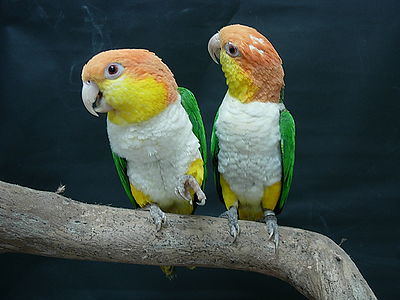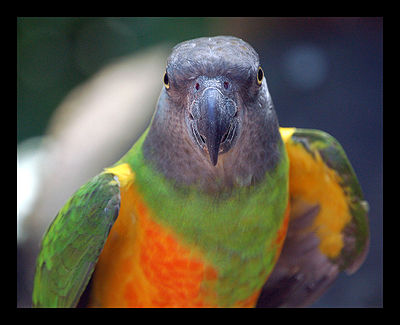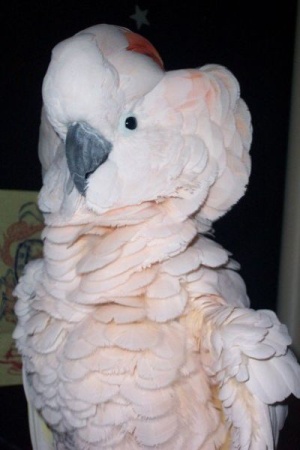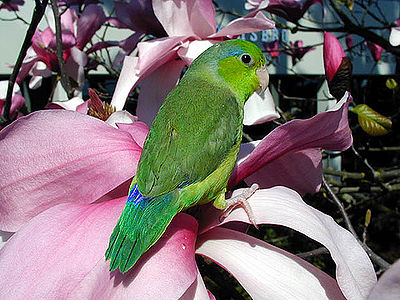
The Caique, also known as White-Breasted, Apricot-Headed or Yellow Thigh is a parrot. Their natural living space is in South America, mainly Bolivia, Brazil and Peru.
The Caiques’ habitat is subtropical or tropical lowland forests or swamps. Caique are social birds and live in pairs or groups of up to 30.
This parrot reaches about 9 inches in length as an adult. The adult color is primarily green with forehead, crown and nape of neck, orange/yellow. Thighs are green, belly is white and primary feathers are bluish. Feet are pink or grey.
As pets, Caiques are fun-loving, loyal and lovable. They are energetic and active acrobats. These clowns are sometimes referred to as “dancing parrots” as they hop or dance to rhythmic clapping. They are very curious so be careful to have only safe objects about for them to explore. To discourage biting, offer a toy instead of your fingers. If they continue to misbehave, place in the cage for a while. A Caique can be noisy so to discourage excesses, cover the cage until s/he is quiet. Eventually your Caique will understand if s/he is too noisy, there are consequences. Caiques are intelligent and with patience can be taught to talk.
The best cage is rectangular in shape. It should be large enough so that the bird can extend wings fully. There should be no sharp edges and doors should be secure and escape-proof. Stainless steel is the best choice. Bars should be spaced so that the bird’s head cannot fit through them. Newspaper is great for lining the cage. Other products that can be used are non-toxic sawdust, aspen wood shavings or ground corncobs. There are a variety of perches, but be aware that rope perches can cause choking if threads are loose. Check these daily and cut off any loose threads.
Since Caiques are territorial, it’s best for them to be out when cleaning the cage. You can spot clean the cage daily and wash it with warm water once a week. Wash dishes and clean perches and toys. Birds can be messy eaters, so you might want to protect walls, floors and carpeting.
There are a number of quality parrot food mixes available commercially. You can add organically grown fresh fruits, veggies, sprouted seeds and nuts to your bird’s diet. If organically grown produce is not available to you, wash all fruits and veggies thoroughly to remove any pesticide residue. Any bird treats or seeds should be free of artificial colors, flavors and preservatives. A cuttlebone is a good source of calcium. Be careful with supplements as you don’t want your bird to overdose on any vitamins or minerals. Fresh water should always be available.



